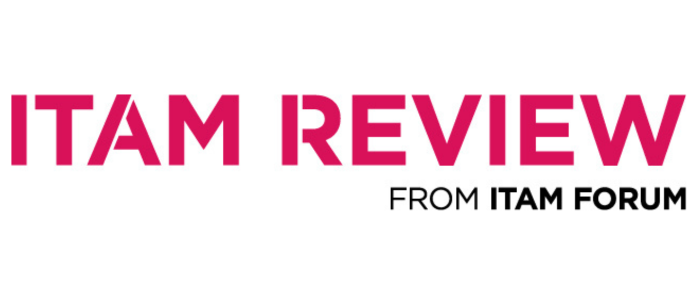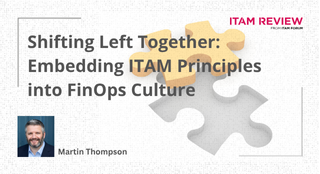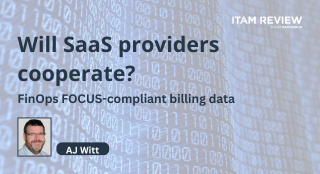Are we ready for outcome-based pricing?
When I first joined the ITAM industry (which feels like a million years ago), the predominant licensing metric in the market was per device. So, if you have three devices, you need three licenses. Then, with the combination of the subscription economy and Moore’s Law kicking in, we shifted to power-based licensing and per-user pricing.
So, it’s intriguing to see a new wave of AI technology now being charged based on business outcomes. This is a fascinating development. At a high level, I think it’s a step in the right direction because it links business investment in software directly to the outcome it’s connected to. But it’s not without its challenges, and it’s something we, as ITAM professionals, will need to embrace and understand.
For example:
- Salesforce’s “Agent force” is priced based on conversations.
- ServiceNow’s AI Agents are priced based on “assists”.
- Zendesk’s pricing is per “resolution”.
All three examples link AI capabilities to user-based pricing, so it’s not “pure-play” outcomes based… yet. But I’m sure that will come in time.
Know How to Measure It
A few years ago, I ran something called the Campaign for Clear Licensing. It was during a time when software audits were reaching fever pitch. We were never lobbying for fair licensing exactly—we just wanted clarity. Companies were being audited against metrics they didn’t understand and didn’t know how to measure. As a result, our message to end-user customers was: if you’re buying and installing new software in the enterprise, don’t embark on that journey until you know how to measure it—how to measure the consumption. And if you’re accepting an audit clause, you need to understand what you’re being audited on and how to measure whether you’ve passed. Easier said than done!
I feel we might need to revisit these first principles for outcomes-based licensing. Do we agree on what the ‘outcome’ is? How do we measure how much we’re using and how to control it?
Outcomes-Based Pricing
Outcomes-based pricing isn’t a brand-new concept. I remember hearing references to “barrels of oil produced” for Oracle licensing or the number of invoices processed by SAP. But imagine this approach being applied to a myriad of different SaaS and subscription licensing models across the enterprise. Without proper preparation, it brings a whole new level of complexity and potentially, new ways of working.
From a best-practice perspective, the ITAM Forum’s Practical ITAM framework talks about the “four Rs” of optimisation—Remove, Reconfigure, Renegotiate, and Reuse. In an outcomes-based licensing model, ‘reconfiguring’ might mean more than just a technical tweak (like changing virtual environments, hardware size, or software version). It could mean business reconfiguration—how we handle calls, inquiries, processes, etc.

I can certainly understand why software companies want to link AI infrastructure to outcomes. Especially right now, AI is a significant investment, and each inquiry has a cost they want to pass on. But customers also need to be able to control volumes so they can predict costs.
When Things Get Tricky
Where it gets tricky is in unusual cases—say, a major IT failure. I appreciate this is an outlier, but imagine something like a CrowdStrike-level incident. Without checks in place, AI could happily motor through every single request, resolving them automatically. Traditionally, you’d triage, jump on social media, post on the service desk portal. Generally, you’ll reduce the burden on your support staff because they’re only human. In an AI-driven world, there’s no human limit. The costs could skyrocket if you’re paying for each resolution.
Customers will need ways to apply similar “limiting levers” in extreme scenarios. And as we saw from a recent conversation on Reddit for ZenDesk customers, we also need to define what exactly counts as a “conversation” or a “resolution.”
Like it or not, predictable costs are at the heart of any smoothly running business, and that predictability underpins stock markets and entire economies. Software companies will need to assure customers that controls are in place or they risk those customers deciding to build AI solutions in-house to gain more predictable costs.
These are interesting times! I’d love your thoughts on this: how does it fit into the existing world of ITAM, and how do we help businesses manage these new costs? While the delivery of value will be more transparent, it will bring new challenges to ITAM professionals.
Can’t find what you’re looking for?
More from ITAM News & Analysis
-
Broadcom vs Siemens AG - A Brewing Storm
The ongoing legal battle between VMware (under Broadcom ownership) and Siemens is yet another example of why ITAM goes far beyond license compliance and SAM. What might, at first glance, appear to be a licensing dispute, ... -
Shifting Left Together: Embedding ITAM into FinOps Culture
During one of the keynotes at the FinOps X conference in San Diego, JR Storment, Executive Director of the FinOps Foundation, interviewed a senior executive from Salesforce. They discussed the idea of combining the roles of ... -
Addressing the SaaS Data Gap in FinOps FOCUS 2.1
I recently reported on the FinOps Foundation’s inclusion of SaaS and Datacenter in its expanded Cloud+ scope. At that time, I highlighted concerns about getting the myriad SaaS companies to supply FOCUS-compliant billing data. A couple ...
Podcast
ITAM training
Similar Posts
-
Broadcom vs Siemens AG - A Brewing Storm
The ongoing legal battle between VMware (under Broadcom ownership) and Siemens is yet another example of why ITAM goes far beyond license compliance and SAM. What might, at first glance, appear to be a licensing dispute, ... -
Shifting Left Together: Embedding ITAM into FinOps Culture
During one of the keynotes at the FinOps X conference in San Diego, JR Storment, Executive Director of the FinOps Foundation, interviewed a senior executive from Salesforce. They discussed the idea of combining the roles of ... -
Addressing the SaaS Data Gap in FinOps FOCUS 2.1
I recently reported on the FinOps Foundation’s inclusion of SaaS and Datacenter in its expanded Cloud+ scope. At that time, I highlighted concerns about getting the myriad SaaS companies to supply FOCUS-compliant billing data. A couple ... -
The Future of ITAM
As an ITAM Industry Analyst, I’m often asked what ITAM’s future looks like. This can be a tough question to answer because when it comes to the future, there are endless possibilities. Often, it seems, some ...




